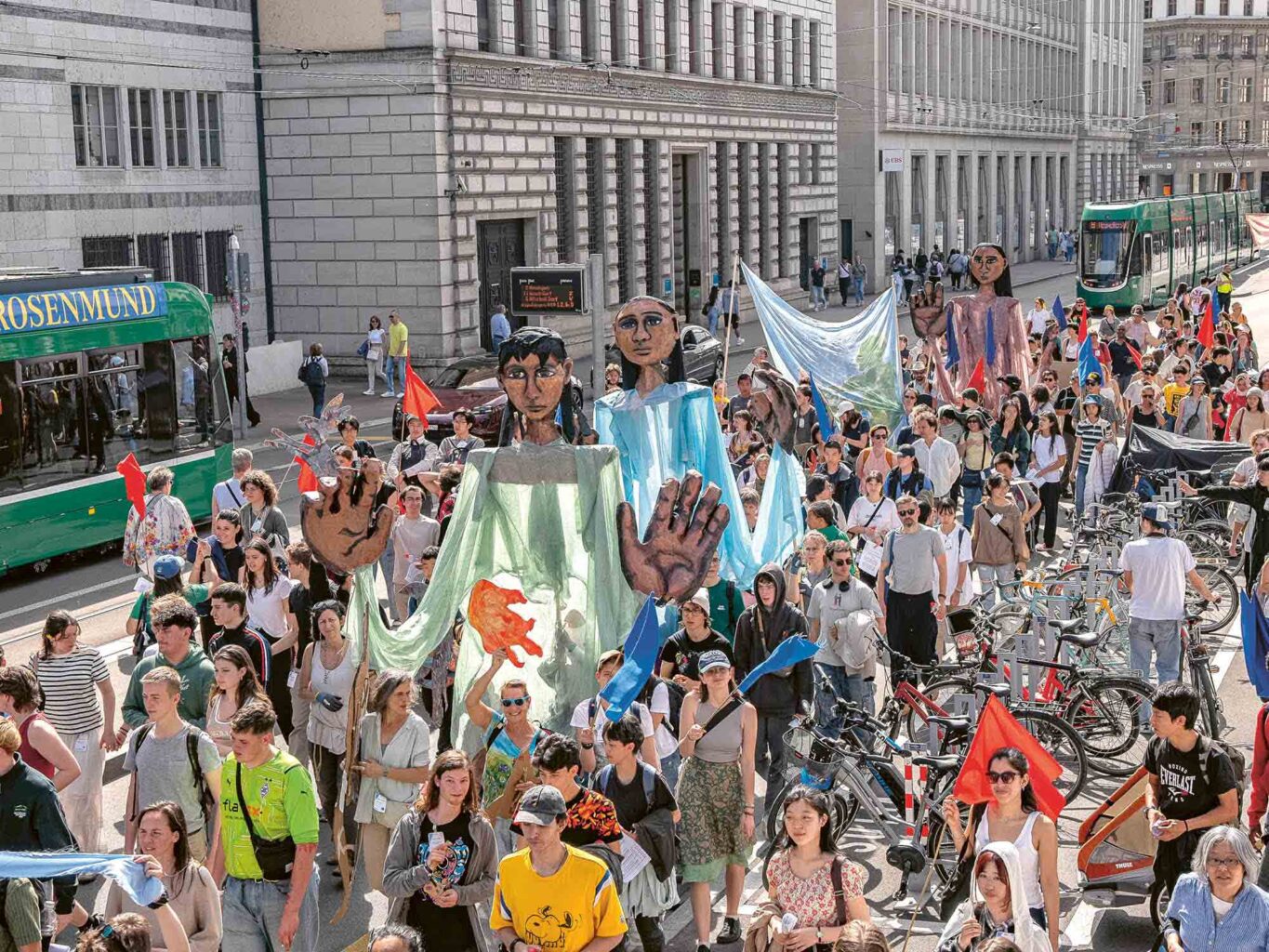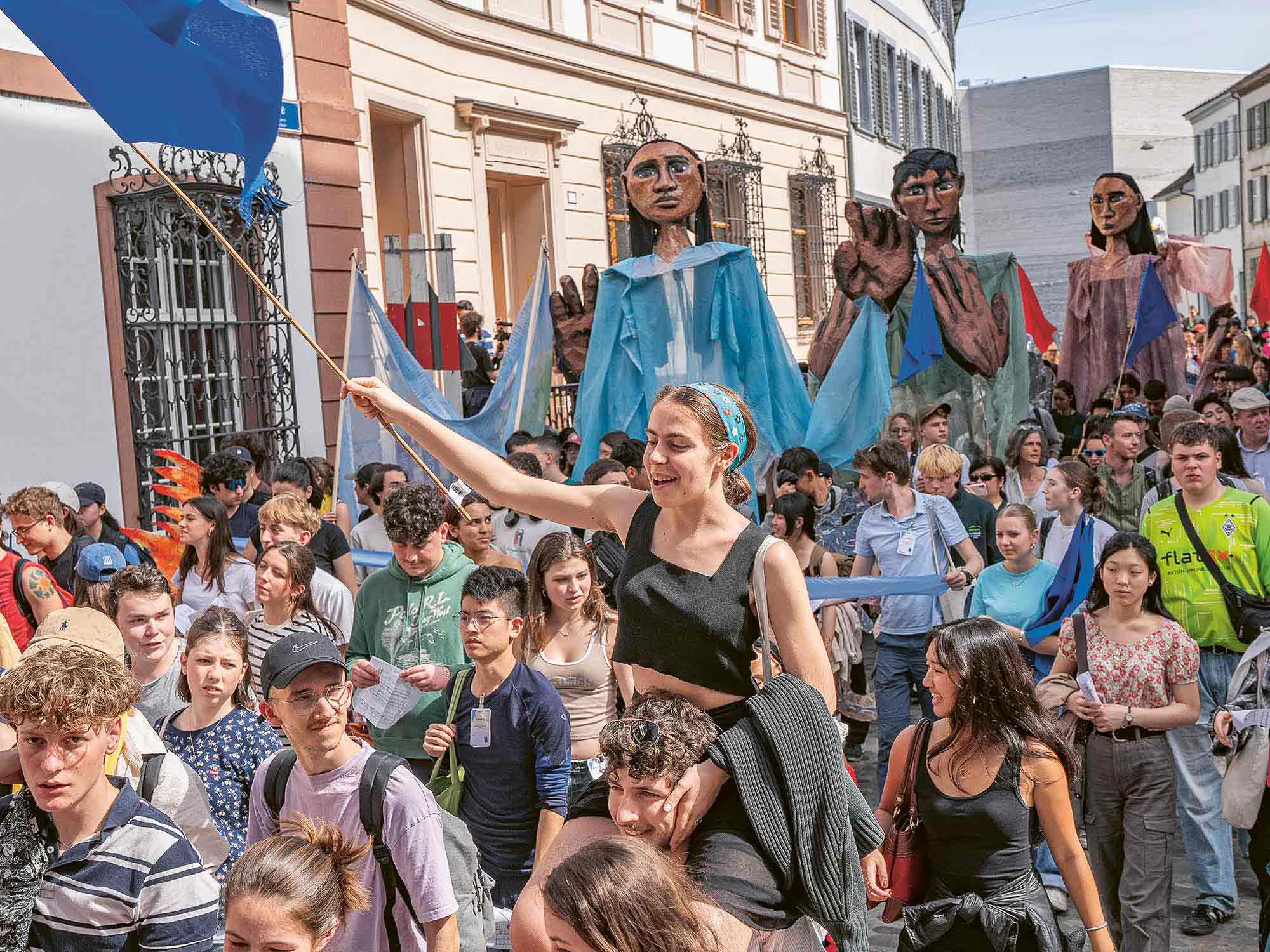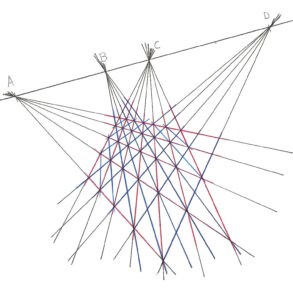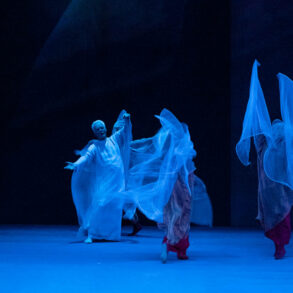This is a story of peace—a very influential and meaningful story, as far as peace in North America and beyond is concerned. But it’s not very well-known. It is the story of the Great Peacemaker, the founder of the Haudenosaunee Confederacy, which today consists of Six Nations (originally Five). What follows are excerpts of this long and great story, parts of which were told at the International Students’ Conference that took place in April 2024 in Switzerland.
600, 700, 800 years back in time, in the area of the Finger Lakes, the place that is now called New York, there was perpetual war between five nations: the Mohawk, Oneida, Cayuga, Onondaga, and Seneca. It is said it was a time of great evil which found expression through black magic and cannibalism. The conflicts just kept repeating, again and again, in endless cycles.
At this time, an individual is born who eventually becomes known as the Great Peacemaker. As a young man, he realizes that he has to bring the Great Law of Peace to this land of war and conflict. So he sets out to spread this great law, speaking to anyone who will listen. But there’s so much deep cynicism and so much trauma related to violence that not many people do. They have a hard time making meaning out of the words that he uses.
At one point on his journey, he comes to the home of a woman named Jigonhsasee. Jigonhsasee nurses and cares for wounded warriors, no matter what nation they belong to. But her help is partly for her own amusement: she relishes the tales of war – she has little true sympathy for those she mends, and it often turns out badly for them. The Peacemaker proposes that she join him in trying to bring an end to the perpetual circle of violence, but she cannot see how it’s possible. “It’s easy to speak about peace, but it’s hard to realize peace. How will you do this?” she asks. But over time, the words and the impression of the Peacemaker work on her, and she has a change of heart. Jigonhsasee becomes one of the first people to join the delegation of the Peacemaker. He names her “Jigonhsasee of the new face.” A meaningful intuition exists in the relationship between the Peacemaker and Jigonhsasee that will eventually find expression in the Haudenosaunee Confederacy, where the chiefs and leaders are chosen by a circle of women carers. But at this point in the story, when the Peacemaker first meets Jigonhsasee, and she joins his effort, there are many years and many journeys before any such confederacy is to become a reality.
They travel onward together, and as they go from nation to nation, they say, “We bring the Great Law of Peace. Thinking should replace killing. All hatchets should be buried, and all nations should sit under one roof.” And yet, every time they come to a nation and speak with the chiefs and the people, they are confronted with the same argument: if someone buries their hatchet, it just makes them vulnerable. The only way that anyone will agree to relinquish violence is if everyone agrees to it: everyone must adopt the Great Law of Peace or no one will. This goes on and on.

One day, the Peacemaker is on a road known as the Murderer’s Road. He comes upon a hut where a man lives who kills people who pass by unsuspectingly. It is his way of nourishing himself. The Peacemaker climbs on top of the hut and looks in through the smoke hole. Just as he does this, the man looks into the big pot where he’s preparing a meal of someone that he’s killed. As he looks down, he sees the reflection of the Peacemaker’s face in the pot. The reflection radiates deep humanity, peace, and dignity. For a moment, the man thinks that it’s his own face reflected in the water, and he is shaken by powers of conscience—he’s overwhelmed by the fact that he could murder people for food and live as he’s been living. It is a moment of awakening. He grabs the pot, stumbles outside, and empties it. He sobs in utter misery and suffering, feeling the huge burden from the powers of conscience that have been awakened in him. The Peacemaker climbs down off the roof and comes to him.
The man tells his story. He was once a great chief of the Mohawks and a proponent for peace and for ending violence. Then, something happened to him that was so painful, so horrific, that with intense, deep grief and trauma, he sank into indescribable depression and eventually into the life that he was leading when the Peacemaker found him. A great chief of the Onondaga Nation named Tadodaho had murdered his entire family, including his seven daughters.
So the Peacemaker begins a condolence ceremony. He cleanses and purifies all the suffering that is burdening and crushing this man. He says: “Tears blind your eyes. I wipe these away with the soft white fawn skin of compassion. I make it daylight for you so you can see the beautiful sky. Now you shall do your thinking in peace, when your eyes rest on the sky.” He not only offers purification of the vision that is blurred by grief and tears, but goes on: “Your ears are blocked. You cannot hear. I remove this obstruction with these words and a feather so that you may have perfect hearing, so that you may hear the birds calling, the waters rushing, and the voices of others.” And he doesn’t stop there. “Your throat is choked, and you cannot speak. I give you water to drink, to wash away the grief so that you can breathe and be enlivened by the Creator, and so that you can speak clearly.” A healing, a certain resurrection and purification, takes place between these two individuals.
Then the Peacemaker once again shares his vision: “I bring the Great Law of Peace. Thinking should replace killing. All hatchets should be buried, and all nations should sit under one roof.” And he gives this man a name, Hiawatha, meaning “he who combs.” Hiawatha becomes one of his closest allies in the effort to bring the Great Law of Peace. Jigonhsasee, “of the new face,” and Hiawatha, “he who combs,” join the Peacemaker, and along with others, they continue to travel and to try to build a movement for peace and a new constitution, a new confederacy of nations. Hiawatha is a wonderful and powerful asset in this effort because he is the great orator. His words clarify the thoughts, feelings, and intentions of his listeners. Whenever he speaks, there’s a power of peace and of wisdom that is immediately communicated to everyone present. This is something that the Peacemaker could not do in his efforts alone, so together, they’re able to make progress that was not possible before.

This all occurs over many, many years. Slowly, more and more become willing to adopt the Great Law of Peace. The first nation that is willing is the Mohawk nation and, to this day, they’re referred to as the founders of the Confederacy. But for the Great Law of Peace to be adopted, everyone has to agree. The last holdout is the Onondaga nation, located right in the center of the territory and the conflict. They are led by none other than the powerful Tadodaho. Tadodaho has a crooked body. It is said that he had seven crooks in his back. He is also a powerful magician, and his hair is full of snakes. A great delegation from all the nations comes to Tadodaho on his island, in the swamp of what today is central New York. They present their willingness to bury the hatchet and invite him into the Confederacy. Not only that, but they say that if Tadodaho will lead the Onondagas to bury the hatchet and embrace the Great Law of Peace, he can be the tender of the central fire, the most prominent position in the Confederacy. But Tadodaho is absolutely skeptical, with a cynical heart. His answer is always a sneer, a laugh, and a scream: “When will this ever, ever come to be?” This is a terrible obstacle because it is clear to everyone that if the Onondaga do not join the Great Confederacy, peace is truly impossible.
On leaving one of these visits, Jigonhsasee looks up and sees an eagle accompanied by a great song from the sky. It is a peace hymn. She understands—this hymn has the power to bring about the final transformation that is necessary for the Confederacy to be founded. She teaches it to the delegation, and they return to Tadodaho singing. As they approach his island in the swamp, they hear his laugh and hear him screaming: “When will this ever, ever come about?” But then he becomes quieter and quieter because he is also hearing something—he hears the hymn of peace. By the time they arrive, his gestures and his manner are peaceful. He is receptive. And when they propose once again that he consider embracing the Great Law of Peace and the role of tending to the central fire and the Longhouse, he kneels down in a gesture of affirmation. At this point, Hiawatha, the man whose family was killed by Tadodaho, steps forward and combs the snakes out of Tadodaho’s hair. The Peacemaker straightens the seven crooks in his spine.
This, at last, enabled the establishment of the Haudenosaunee Confederacy. Eventually, through discussion and wampum, a set of agreements that are referred to as beams of the Longhouse were made. One of the central lessons the Peacemaker gave was to break an arrow over his knee: “Alone, you are weak.” Then he would bind five arrows together and show that it was impossible to break them over his knee: “Together, we are strong.” The spirit of peace was imagined as a great White Pine with four roots running in four directions—north, south, east, and west—that stretched all around the world. On the peak of this White Pine sat a Bald Eagle and buried underneath it was a war hatchet.
Thus the Confederacy began, and there are some remarkable facts about this confederation and its constitution. It appears to be the first time in history that the phrase “United Nations” was used. Nations could join the Confederacy, and the Tuscarora Nation eventually did, making it a Six Nation Confederacy. With the constitution, freedom of speech and the right for religious belief were protected. Citizenship was granted to anyone who wanted to live in the area and abide by the Great Law of Peace. Many Europeans who arrived in this territory during the time of colonization were granted “dual citizenship”—they became members of one of the nations of the Confederacy while retaining citizenship in their European country. There was a kind of balancing or supplementing nationalism and language groups by establishing a clan system. The Peacemaker created clans that existed in all five nations. So besides belonging to a nation, you also belonged to a clan. Every clan had members in all the nations, and these clans were cultivated in such a way that you felt that another clan member was part of your family. Traveling across the territory, you could always call on your clan as relatives for hospitality or anything that you needed.

There were long deliberation processes where chiefs from the different nations discussed the actions of the Confederacy. There was also a kind of bicameral system: the two “chambers” consisted of the younger brothers and the older brothers, who discussed issues separately and then came together seeking consensus. The chiefs were appointed by the circle of women. Chiefs were chosen who had “skin seven thumbs thick” and were not easily irritated, had family and children, and an orientation towards peace, integrity, and care. The circle of women also had the power to remove a chief who no longer abided by the Great Law of Peace, a process some see as a precursor of the right to impeach a president in the US Constitution.
As a young man, before the establishment and the writing of the United States Constitution, Benjamin Franklin served as a clerk or a scribe in meetings between the English and the Haudenosaunee. He developed a deep interest in the Haudenosaunee and their constitution and began to advocate for learning from them. In some of his first proposals for a confederacy of the colonies, for example, the Albany Plan, he drew direct comparisons to the Haudenosaunee constitution. Back at the end of the 18th century, the Confederacy as a form of governance was well known to people facing the dilemmas of bringing into being the United States of America and the constitution that it rests on. I wrote this article in Switzerland, and it is astonishing to consider that the bicameral system in the USA, which has some of its roots in this first democracy in North America, was adopted by the modern Swiss constitution.
Of course, the Haudenosaunee Confederacy does not have an entirely peaceful history. It’s clear that throughout its history, there were battles, transgressions, and disagreements between the nations. But we can clearly see a moment of spiritual, social-political transformation from the tortuous and perpetual cycle of violence, bloodshed, and deep trauma to the first democracy. The emphasis was on peace, diplomacy, and listening, on everyone having their say, and on choosing leaders who were not primarily fighters—very different from the ancient traditions of Rome and Greece that are referred to in discussions on the origins of democracy. Even today, we can learn from and be inspired by such peaceful imaginations of constitutional collaboration and cooperation and come to the recognition of a spirit of peace that is active and has been active for hundreds of years in the United States of America, with roots reaching far beyond.
Commentary from Kay Olan, Storyteller from the Mohawk Nation:
I think it is always good to share the story of the Peacemaker’s journey. Thank you for wanting to do that. I think it is also very important to consider sharing Haudenosaunee teachings that emphasize the importance of remembering our relationship with and our responsibility to the natural world. We are instructed that we, the human beings, were put here as caretakers, not destroyers. We are supposed to consider the effects of our actions and of our words on the future generations. We are supposed to think seven generations ahead in order to make good decisions for the sake of those to come. Onondaga Faithkeeper Oren Lyons once said that we cannot have peace until we make peace with Mother Earth.
Commentary from Nathaniel Williams:
The International Students’ Conference, Taking Heart – Finding Our Way Together, took place in April of 2024 in Switzerland. The special qualities of being young, the heartfelt questions, the hard challenges, and the surges of enthusiasm and compassion have a special place at the ISC. An instinctive spirituality and wisdom light up, especially through encounters, conversations, creativity, and experiences, where the great questions of life can be explored. After experiencing a project with renewing, warm light, like the ISC, it is easy to feel a plea rise from within for others, young and old, to take heart by clearing away more suffocating brambles of isolation and fear; to make spaces for the young, thinking heart and all the patterns it can help weave into the future.
References
- Cadwallader Colden. The History of the Five Indian Nations of Canada.
- Jacob Needleman. The American Soul: Rediscovering the Wisdom of the Founders. Penguin, 2003.
- Paul A. W. Wallace. White Roots of Peace: The Iroquois Book of Life. Clear Light Publishers, 1994.
More Youth Section and Questions of Courage
On the images At the conference, the Haudenosaunee tale of the peacemaker was recreated as theater in public space. 734 young people and other guests paraded with large puppets and backdrops from Dornach to the city center of Basel. Photo: Xue Li









